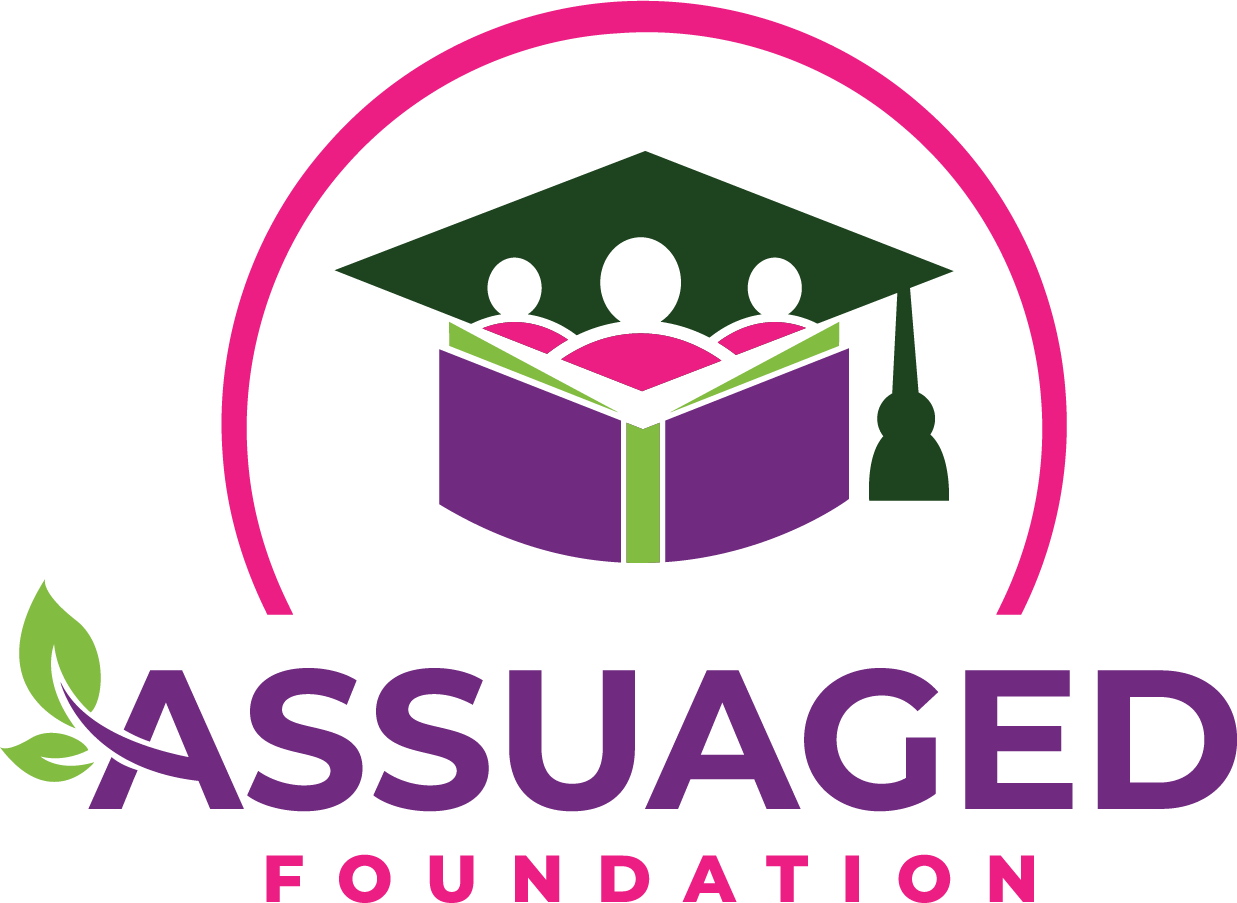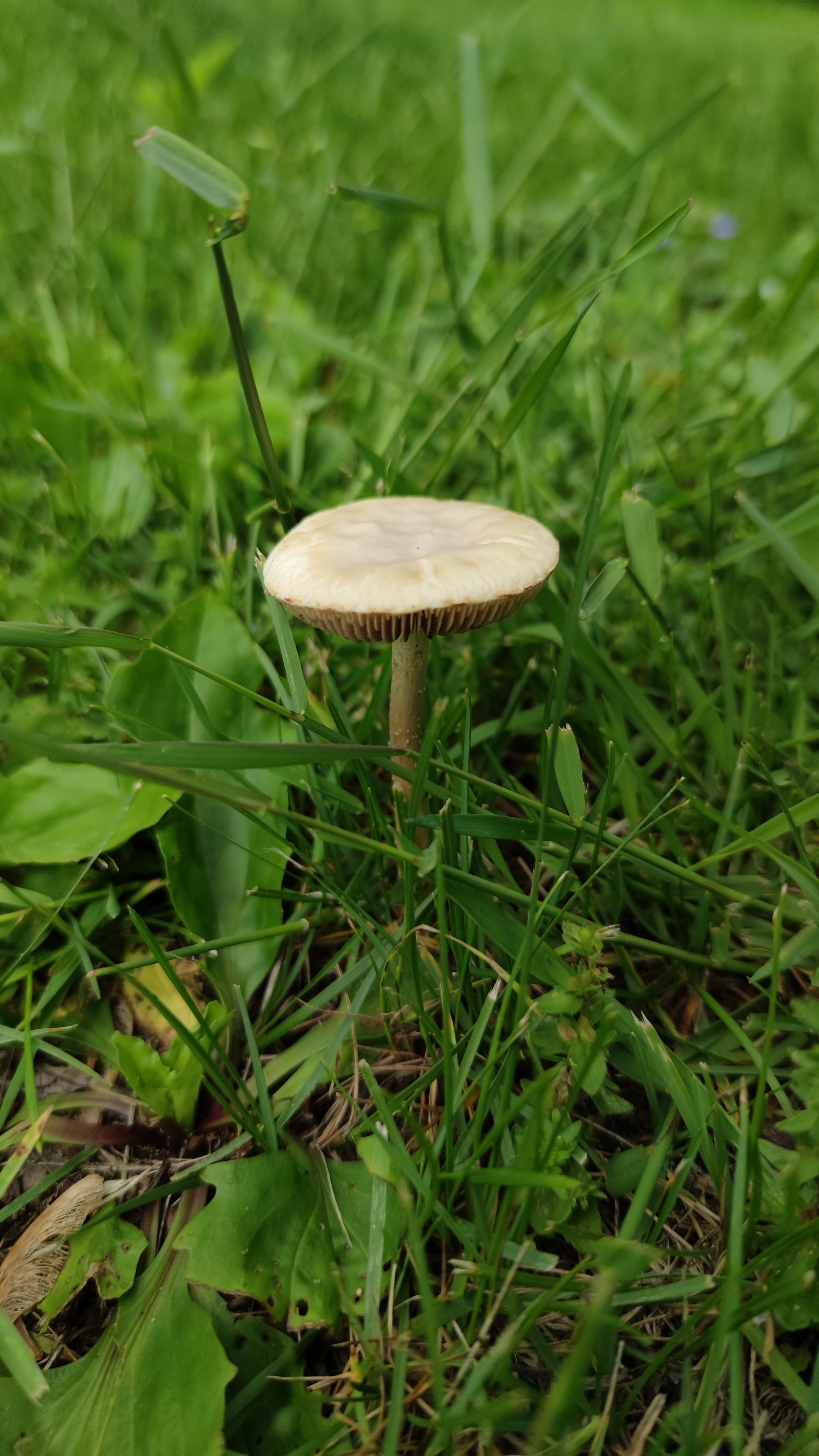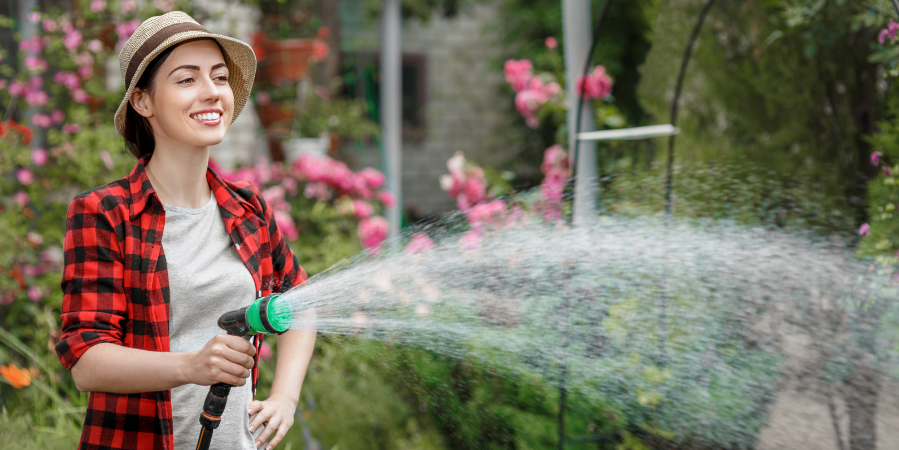If you’ve heard about horticultural therapy before, or read The Horticultural Therapy Run-Down, you know its extraordinary benefits, incredible accessibility, and that it’s often hard to find.
Even though therapy requires a trained therapist, you can gain some of its benefits at home by stealing the process, environment, and activities.
Let’s start the heist!
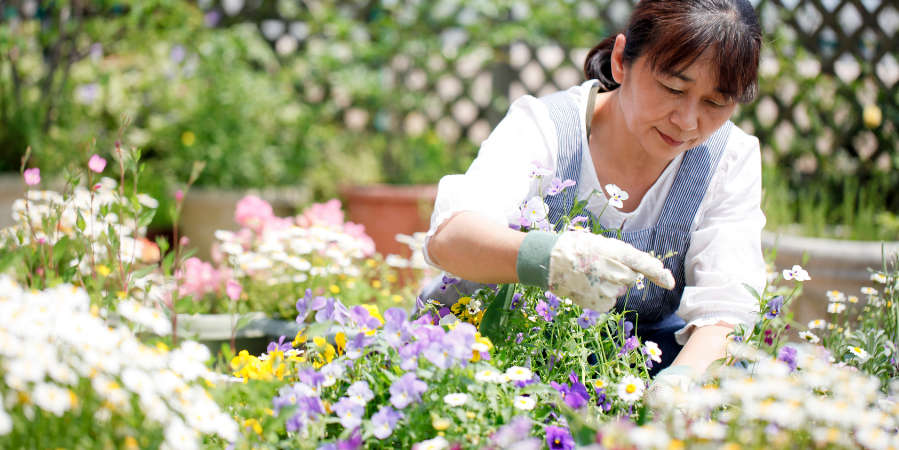
Steal the Process
Observe
How would you like to grow or improve? You might want to exercise more, get more sun, reduce anger issues, socialize more, or just reconnect with nature.
Write down all your ideas.
Target
Choose your top 1-3 priorities from your list. These are what you’ll want to work on. Therapists don’t recommend on working on more than 3 objectives at a time.
To start working on them, make a SMART goal and plan an activity, plus a back-up activity if the first one doesn’t work out. Each objective should have a SMART goal.
SMART goals are Specific, Measurable, Attainable, Relevant, and Time-bound. Making SMART goals is a powerful way to keep on track.
Sample SMART goal: Remove old flowers from the bell flower plant every three days for four straight gardening sessions.
Track
Keeping track of things is essential. How things made you feel, what you learned through activities or research about horticulture, progress, and most importantly, your priorities, SMART goals, and activity plans.
If you don’t like writing, that’s ok! You can also use voice-to-text, video journaling, voice clips, and photos. Remember, horticultural therapy should always be accessible.
Adjust
Sometimes, things don’t work out, or they work better than expected. Altering activities as needed is always ok, as is switching your third priority to your first priority, as long as it’s for the purpose of accessibility or aiding your maximum growth and development.
Evaluate
Did you reach a SMART goal? If so, congratulations! Celebrate your successes.
If not, why? The answer might lead you to make a new SMART goal and activity, choose new priorities, seek out professional therapy, or just passively enjoy nature’s benefits instead.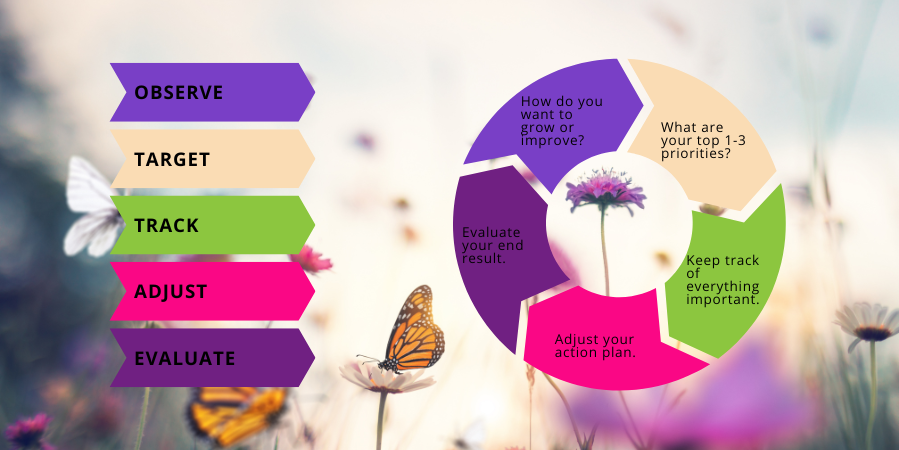
Steal the Environment
Horticultural therapists work hard to make things accessible for their clients. You can try it for yourself! Improving even one thing is well worth it.
Motivation
It’s important to start with activities you think you’ll enjoy, or that spark your interest. You’re far more likely to accomplish your goals if you’re invested in what you’re doing.
Allergies
Allergies? Take steps to reduce or avoid flare-ups. Stick with indoor activities during allergy season or wear a mask outside. To prevent mold, keep unused soil, compost, tools, and pots dry. Research all plants before purchase or usage.
Plant choice
Uncomfortable with spiky, rough, or thorned plants? Don’t buy them! If you really love thorny plants, thornless varieties sometimes exist, including roses.
Also, some plants are toxic. Always research plants to make sure they’re safe for you, especially if you have children or pets.
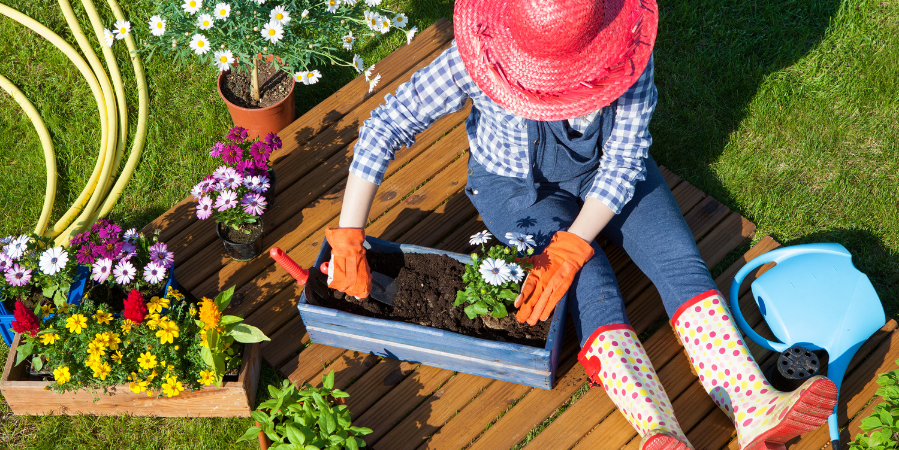
Pain Management
Some tasks can trigger back pain, knee pain, and more. To prevent this, or if you have arthritis or chronic pain, investigate tools, activities, and methods to reduce it. Raised beds, standing weeding tools, doing tasks on a table instead of the ground, wrist supports, and knee cushions are some options to increase comfort.
Tool Choice
Are your tools uncomfortable to use or not right for the job? Don’t want to spend money on tools you might not use much? There are always alternatives. For example, children’s tools are good for potting, or you could DIY with a spoon instead of a trowel and a fork for weeding.
Location
It’s ok to stay indoors. You can still grow tasty herbs, microgreens, or interesting houseplants, arrange flowers, or press leaves. There’s always something to do with plants—indoors, outdoors, summer, or winter.
It’s also ok to challenge yourself by going outside in less-than-ideal weather. If it helps meet a goal, like endurance or exercise, do it!
Info Sources
Reading horticulture information online or in books isn’t for everyone. As always, there are alternatives.
Audiobooks and text-to-speech programs are just as good as reading for learning about plants, weather, soil, and everything else horticulture. You can also talk to experienced people at greenhouses or gardening clubs.

Steal the Activities
Stimulate the Senses
Working with plants naturally stimulates all 5+ senses, powerfully enriching your environment.
For example, you might smell freshness while watering, hear water fall on leaves, see the soil turn dark and the plants sparkle, feel cool droplets touch your skin, and perhaps even taste its freshness in the wind. Even flower pressing engages 4 out of 5 senses, unless the flowers are edible, like chamomile.
Fine Motor Skill Tasks
- Pick or cut old, dead flowers off plants to encourage more flowering. Always research how to deadhead each plant type.
- Weed with your hands or weeding tools.
- Wipe dust off houseplants with a damp cloth.
- Make a flower arrangement or press flowers.
Exercise + Large Motor Skills
- Mow the lawn.
- Dig for planting, transplanting, root and rock removal, or just plain fun.
- Fertilize the plants and lawn.
- Install structures like vine trellises or fencing.
Nature Meditation
- As you raise and care for a plant, think of your own or another person’s growth and care, or the life cycle.
- Focus on your connection with nature and the planet while touching it.
- Relate your struggles and successes to that of a plant you care for. What patterns can you discover?

Creativity
Any horticulture task can involve creativity. However, some activities specifically focus on it.
- Make a terrarium.
- Arrange a succulent container.
- Arrange flowers. Use a reference guide of flower meanings for extra creativity.
- To add some therapeutic whimsy, paint or buy pots with faces on them. The growing plants will look like hair.
Socialization Enhancement
- Invite friends or family to horticulture activities.
- Join a garden club or community garden.
- Attend or exhibit something at the county fair.
- Sell something at the farmer’s market.
- Gift or donate horticulture-based creations: potted plants, herbs, food, flower arrangements, and basically anything else. Some might even appreciate the gift of an interesting rock.
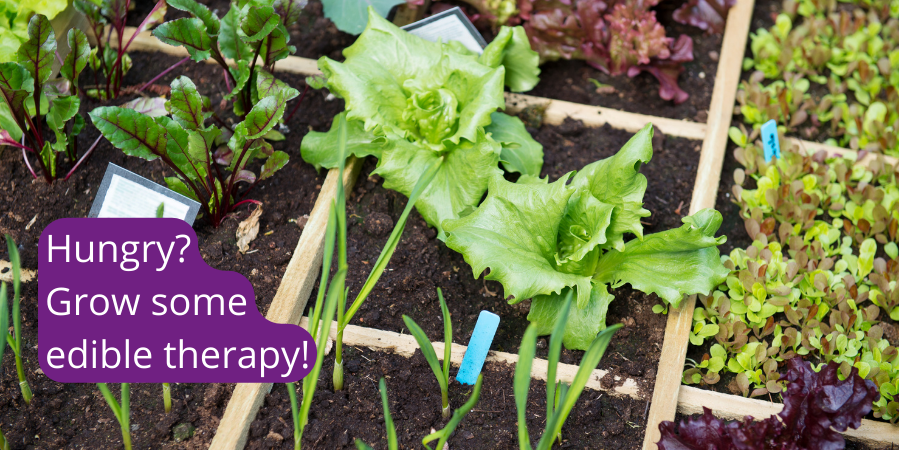
Emotional
Any interaction with plants can influence your emotions. Gardening often causes a state of fascination. Nature is full of surprises and wonders, like unexpected crossbreeding between plants, visiting butterflies, or an unexpected earthworm in an indoor pot. This environmental enrichment is also healthy for your brain, meaning it’s also good for emotions in general!
However, you can target specific emotions with activities.
- Use repetitive, rhythmic activities like weeding, raking, or digging to reduce stress, anxiety, and panic.
- Grow plants you can eat to increase fulfillment.
- Growth of any plant is a sign of success, which can increase self-esteem.
- Care for plants and watch them grow. It can stimulate oxytocin, the love hormone.
Intellectual
Stimulate the mind with new information and connections. Reviewing information counts too, since review solidifies memory paths, enriching the brain.
- Consider buying a microscope to look at seeds, or a soil testing kit track pH and soil nutrients.
- Borrow horticulture books from your local library.
- Investigate plants, seeds, weather, soil, and all things horticulture online.
- Use horticulture knowledge to plan a gardening schedule and create a list of necessities pre-growing season.
Happy Heist!

Sources:
Baker, L. (2009). Nature’s Pervading Influence: A therapy of growth. International Journal of Disability, Development & Education, 56(1), 93–96. https://doi-org.gotoltc.idm.oclc.org/10.1080/10349120802682091
Chiumento, A., Mukherjee, I., Chandna, J., Dutton, C., Rahman, A., & Bristow, K. (2018). A haven of green space: learning from a pilot pre-post evaluation of a school-based social and therapeutic horticulture intervention with children. BMC Public Health, 18(1), 836. https://doi-org.gotoltc.idm.oclc.org/10.1186/s12889-018-5661-9
Detweiler, M. B., Self, J. A., Lane, S., Spencer, L., Lutgens, B., Kim, D.-Y., Halling, M. H., Rudder, T. C., & Lehmann, L. P. (2015). Horticultural therapy: a pilot study on modulating cortisol levels and indices of substance craving, posttraumatic stress disorder, depression, and quality of life in veterans. Alternative Therapies in Health and Medicine, 21(4), 36–41.
Greenewald, P. (2015). Horticultural Therapy. American Rose, 43(3), 34–36.
Morita, Y., Ebara, F., Morita, Y., & Horikawa, E. (2018). Increased activity in the right prefrontal cortex measured using near-infrared spectroscopy during a flower arrangement task. International Journal of Psychiatry in Clinical Practice, 22(1), 34–39. https://doi-org.gotoltc.idm.oclc.org/10.1080/13651501.2017.1366527
Planting To Heal. (2018). American Nurseryman, 218(2), 19–23.
Rebecca L. Haller, & Christine L. Capra. (2017). Horticultural Therapy Methods : Connecting People and Plants in Health Care, Human Services, and Therapeutic Programs, Second Edition: Vol. Second edition. CRC Press.
Sandel, M. H. (2004). Therapeutic Gardening in a Long-Term Detention Setting. Journal for Juvenile Justice Services, 19(1/2), 123–131.
Verra, M. L., Angst, F., Beck, T., Lehmann, S., Brioschi, R., Schneiter, R., & Aeschlimann, A. (2012). Horticultural therapy for patients with chronic musculoskeletal pain: results of a pilot study. Alternative Therapies in Health and Medicine, 18(2), 44–50.
Vibholm, A. P., Christensen, J. R., & Pallesen, H. (2020). Nature-based rehabilitation for adults with acquired brain injury: a scoping review. International Journal of Environmental Health Research, 30(6), 661–676. https://doi-org.gotoltc.idm.oclc.org/10.1080/09603123.2019.1620183
